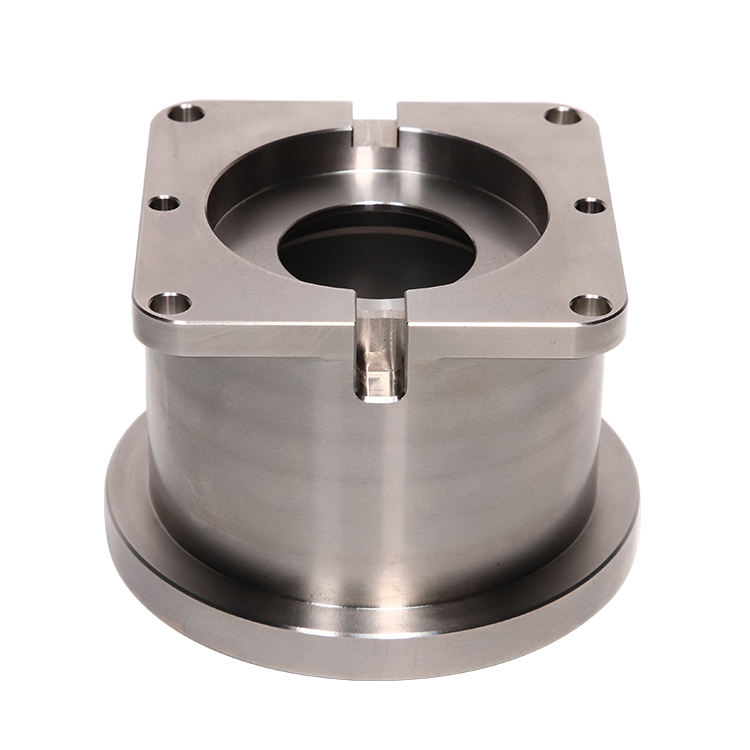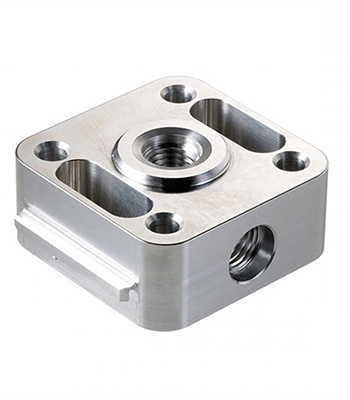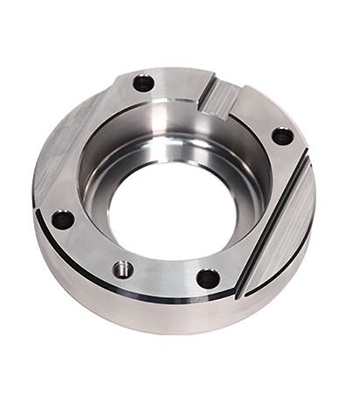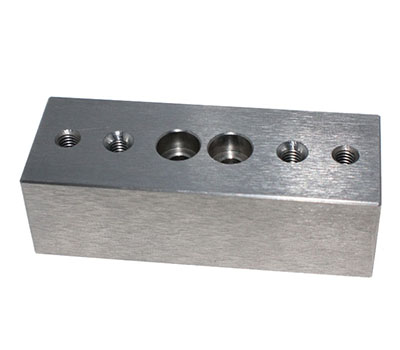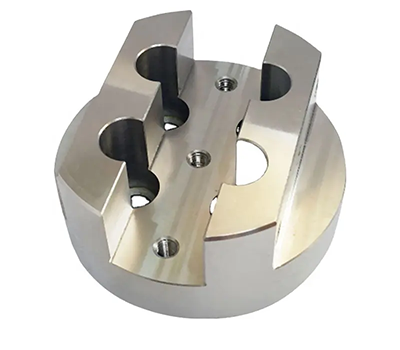Milling is the process of removing material from a solid block to create a finished or semi-finished shape. The process is guided by your CAD file, optimized to create a physical copy of your digital design.
In CNC milling, the work piece is held in a rigid vice or holding fixture, mounted on a work table. This table rotates as well as pivots, making two axes of movement. Cutting tools mounted on a rotating spindle remove material to create a variety of complex geometries and part features on the work piece. The real advantage of a multi-axis milling machine is that the worktable and the spindle move on many axes independent to one another, providing not only accuracy and repeatability but also versatility.
CNC milling is ideal for making angled shapes, slots and channels, chamfers, holes, curves and flat surfaces, among many other features. A CNC mill removes large amounts of material fast with high accuracy, while producing a good surface finish. Milling can be done on any rigid material, though we primarily work with metals and plastics. Of all available CNC machining processes, milling is the most versatile.Set-up time is minimal, so a CAD file can be translated into a finished part in a matter of hours. Because there is no need to make other specialty tools, you aren’t committed to a minimum order quantity so the process is very cost effective with little waste.
Like other types of computer numerical controls for machining applications, CNC milling offers several benefits, including:
· Accuracy: Whether you’re producing an initial prototype or final product, you can trust the item will match the measurements dictated in your CAD or CAM file. That level of precision gives you several advantages, including improved productivity and lowered material waste. It also maximizes your costs for machining the hardware.
· Versatility: The availability of vertical and horizontal CNC milling machines, as well as CNC milling centers in multiple axes, offers excellent versatility. As a result, they can handle projects with varying complexities and parameters with precision.
· Reproducibility: No matter how you’re applying CNC, whether for turning, lathing or drilling, you can count on the machines to produce your product per your CAD or CAM file every time. That leads to benefits similar to those offered by the accuracy of CNC milling centers, such as decreased waste and increased efficiency.
Aluminum: 5052, 5083, 6061-T6, 6063, 6082, 7075-T6, A380
Stainless steel: SUS201, SUS303, SUS304, SUS316l, 420, 430,440C
Carbon Steel: 1018, 1020, 1045, A36, Q235, Q345B
Alloy steel: 4130, 4140, 4150, 4340, 6150
Tightest tolerance: ±.0004inch (0.01 mm) Tighter tolerances are examined on a case by case basis with your technical drawings.
General tolerances are in line with standard of DIN ISO 2768-mK.
Our project managers will consult with you on every part of your project and will seek to provide the highest degree of precision possible.
Part size / Dimension | Tolerance | Angularity |
|
< 12’’ (30 mm) |
± .005’’ (0.125 mm) |
± 0.5° |
< 24’’ (60 mm) | ± .010’’ (0.250 mm) | ± 1.0° |
< 36’’ (90 mm) | ± 1/64’’ (0.400 mm) | ± 1.0° |
Surface
Choose the right surface to your CNC machining parts
Picturesof finished samples
As Machined
Ra 3.2~Ra 12.5 µm.
Micro processing traces to Micro machining tool marks.
No further surface treatment after the part is machined. If the products don’t need special surface protection or decoration, it can be fine and cost effective to choose none surface finishing requirement.

Smoothed surface
Minor direction of processing lines
We keep lower feed rate and high speeding spindle to control the surface

Anodized surface
Anodizing is an electro chemical process that converts the aluminum into a decorative, durable, corrosion-resistant, anodic oxide finish. Available in a variety of colors, like Blue, red, black, etc.
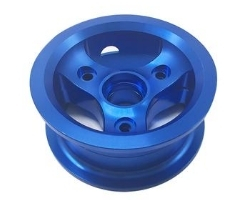
Powder Coating
Powder coat paints with texture (Sandtex Polyester and Textured Polyester) will cover tool marks with no additional finishing operation. Available in a wide range of colors.
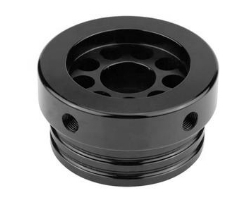
Electropolished finish
Electropolishing is an electrochemical process used to polish, passivate and deburring metal parts. It is useful to reduce surface roughness.
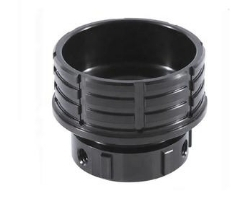
Black oxide
Black oxide is a conversion coating used to improve corrosion resistance and minimize light reflection.

Plated surface
Plating can serve as a layer of protection. It is applied to metal objects when three is an increased opportunity for corrosion to occur. Including (Yellow, Blue, White, Color) Zinc Plated, Chrome Plated, Nickel Plated.

Blasting
Sand blasting is the operation of forcibly propelling a stream of abrasive material against a surface under high pressure to removing all tool marks. We can provide matte or satin surface finish on a machined part. Mainly used for aesthetic purposes.

